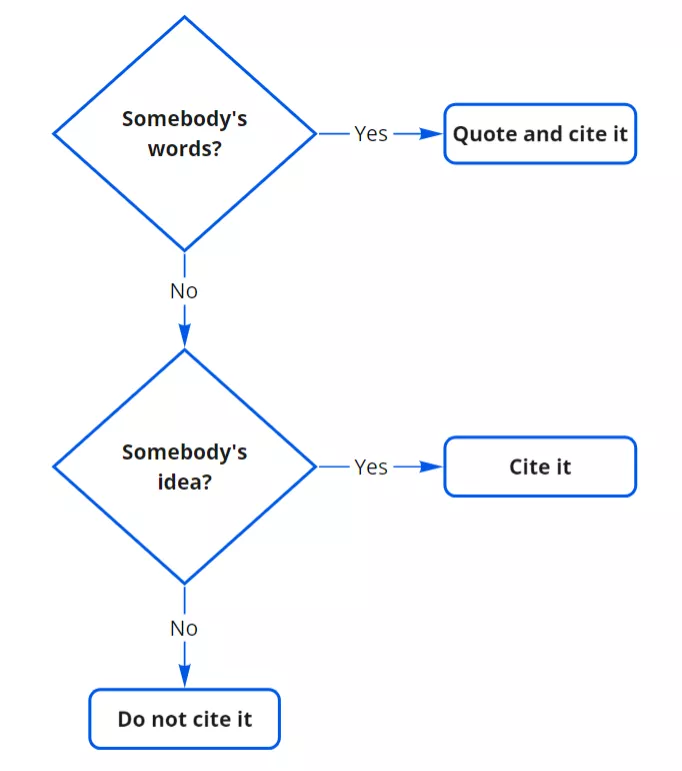2 mins
276
What Is Plagiarism and How to Avoid It
by IvyPanda®
•
No AI
This piece of content has been developed by IvyPanda's editorial team.
No AI was involved in the creation process; only qualified experts contributed.
The information, facts, and sources presented in the text have been carefully checked and verified.
You are free to use it with proper referencing.
Types of Plagiarism
- Copy-and-Paste Plagiarism – This is an academic offense! If you take a sentence or phrase verbatim from a source, you must use quotation marks and cite the source.
- Word Switch – If you take a sentence from a source and change the word order or use synonyms for some words, it is still plagiarism! Think about putting some parts of the phrase in quotation marks and citing the source.
- Idea Plagiarism – If the author of the article expresses a creative idea or suggests a solution to a problem, the idea must be clearly attributed to the author.
How to Avoid Plagiarism
Check your ideas using this scheme:

Ways to Avoid Plagiarism
- Quote the parts that cannot be paraphrased, reference the author, and mention the page number (your quotes should not be longer than 39 words).
- If the part is too long, cut it or separate by your own words, remember to put the phrases that you have borrowed in quotation marks, and cite the source, including the page number.
- Change the structure, order, and vocabulary of those parts that can be paraphrased (write them in your own words), add your own ideas and conclusions, and make sure to cite the source where you took some information from.
- Break complex ideas into smaller units and cite them one by one, adding your own thoughts and considerations.
- If you use factual information or statistical data, it is better to cite it as a direct quote.
- You are to give credit to the author (properly and accurately cite) if you refer to any statement or data that is not yours.
REMEMBER THE MAIN IDEA OF USING THE SOURCES IS TO PROVE / SUPPORT YOUR OWN THOUGHTS OR LEAD YOU TO PROPER CONCLUSIONS.
No one wants to be caught on plagiarizing. However, even wrong citation may lead to borrowings.